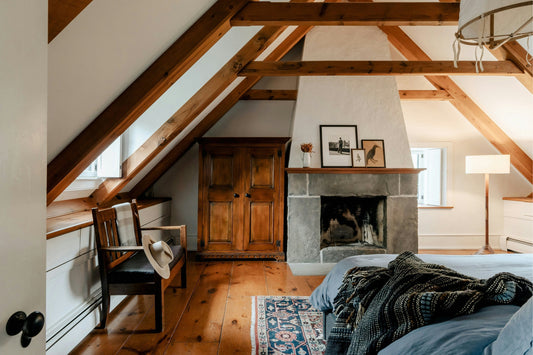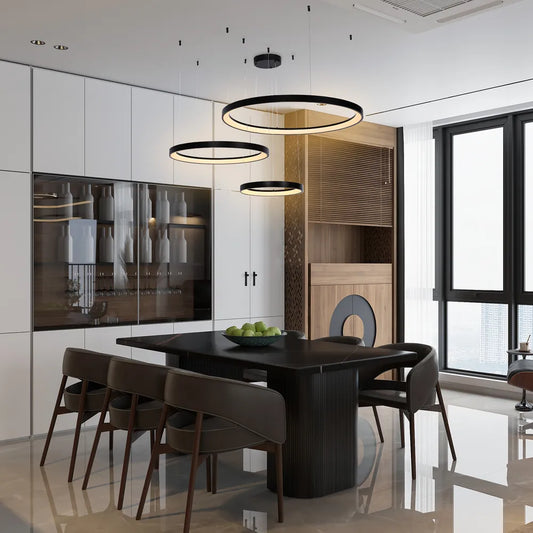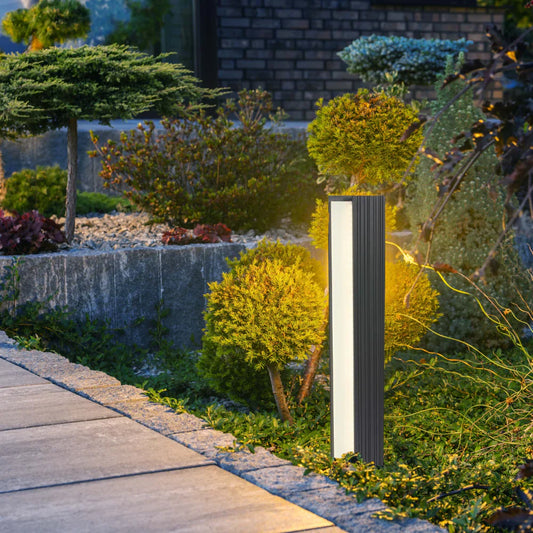
RGB Lighting is a type of lighting that uses red, green, and blue lights to create the same effect as incandescent light bulbs.
This type of lighting is typically used for commercial purposes such as in signs, stage lighting, and arcade game panels. The color spectrum of RGB lighting can be controlled to produce various effects such as white, blue, and purple.
What Does RGB Lighting Do?
RGB lighting is the latest trend in home decor. It allows you to control the color of all your lights with a single remote and, if you're feeling creative, even allows you to create a custom mood in your room.
RGB stands for Red, Green and Blue. These are the three colors that make up every amount of light that we see. The range of colors that our eyes can see is incredibly vast; there are more than 16 million different hues in the visible light spectrum.
How Does RGB Lighting Work?
RGB lighting is a type of lighting that uses individual colors to create the appearance of light. This type of lighting has been used in many different types of applications, including home and office lighting, as well as industrial and commercial applications.
RGB lights are made up of three separate components: red, green, and blue. These colors can be combined in any way to produce the desired effect. Each color has its own specific pattern which determines how it will appear when lit.
The most common application for RGB lights is in the home because they can be easily controlled from a central location. This allows you to control your house and save money on energy costs by only turning on or off what you want when you need it.
Another advantage to home RGB lighting is that it can be easily installed by anyone who has basic electrical skills.
How is RGB Lighting Made?
RGB lighting is made by combining a number of different colored lights. These lights are placed in a pattern that produces the desired color. The RGB acronym stands for Red, Green, and Blue.
RGB lights are most often used to produce colours that are not visible to the naked eye. The most common uses for RGB lighting include colour-changing lights, holiday decorations, signs, flashlights, facade lighting and nightlights.
Where is RGB Lighting Used?
RGB (Red, Green, Blue) lighting, which combines these three primary colors to create a wide spectrum of colors, is used in a variety of applications for both functional and aesthetic purposes. Its versatility allows for dynamic and customizable lighting solutions across numerous environments. Here’s where RGB lighting is commonly used:
Home Interiors and Ambiance Lighting
Room Accent Lighting: RGB LED strips or bulbs can be used to add color accents to rooms, highlighting architectural features, under cabinets, along skirting boards, or around entertainment systems to enhance the ambiance.
Smart Home Lighting: Many smart bulbs and lighting systems use RGB LEDs to allow homeowners to adjust the color and intensity of their lighting via smartphone apps or voice commands, creating customized atmospheres for different occasions.
Entertainment and Media
Stage Lighting: RGB lighting is essential in stage productions, concerts, and performances, allowing for dynamic and thematic lighting effects that enhance the visual experience.
Gaming and Computers: RGB lighting is popular in gaming PCs, keyboards, mice, and peripherals, offering gamers customization options that match their style or the theme of their gaming setup.
Commercial and Retail Spaces
Display Lighting: Retail stores use RGB lighting to highlight products, create eye-catching displays, and draw attention to specific areas or items.
Hospitality: Hotels, bars, and restaurants utilize RGB lighting to create unique atmospheres, adjusting colors to fit the mood or theme of events and spaces.
Outdoor and Landscape Lighting
Architectural Lighting: RGB lighting is used to illuminate buildings and landmarks, allowing for color changes that can highlight features or celebrate events and holidays.
Garden and Landscape Lighting: RGB LEDs can accentuate landscape features, provide pathway lighting, and enhance the beauty of outdoor spaces at night.
Art and Decorative Installations
Art Installations: Artists use RGB lighting to add dynamic elements to their installations, creating visually striking pieces that can change and evolve with light.
Decorative Lighting: From Christmas lights to decorative lamps, RGB lighting adds color and vibrancy to festive decorations and home decor.
Safety and Signage
Emergency and Safety Lighting: RGB LEDs are used in signage and safety equipment, where changing colors can signal different statuses or warnings.
Vehicle Lighting: Some vehicles incorporate RGB lighting in their interior and exterior design for aesthetic purposes and functionality, such as indicating turn signals or operational statuses.
Events and Theme Parks
Event Lighting: RGB lighting transforms event spaces, from weddings to corporate events, allowing for customization that matches themes or brand colors.
Theme Parks: RGB LEDs contribute to the immersive experience in rides and attractions, creating magical and fantastical environments through dynamic lighting effects.
RGB lighting's ability to offer a vast range of colors and its flexibility in control make it a popular choice across various applications. Its integration into smart home technologies and energy-efficient LED solutions further expands its potential, making RGB lighting a key component in modern lighting design and applications.
What is RGBW Lighting?
RGBW lighting represents an advancement in lighting technology that builds upon the traditional RGB (Red, Green, Blue) color model by adding a White (W) LED to the mix. This addition allows for a broader spectrum of colors, including pure white light, enhancing both the color rendering capabilities and the versatility of the lighting system. Here's a closer look at the characteristics and applications of RGBW lighting:
Characteristics of RGBW Lighting
Enhanced Color Range: By incorporating a white LED, RGBW lighting can produce pure white light and softer pastel tones, which are difficult to achieve with RGB lighting alone. This allows for more accurate color representation and a wider variety of lighting options.
Improved Brightness and Efficiency: The addition of a white LED enhances the overall brightness of the light output, making RGBW lighting more effective for general illumination purposes. It can also be more energy-efficient, as producing white light with RGB LEDs alone requires all three colors to be mixed at high intensity.
Better Color Rendering: The white LED in RGBW systems can improve color rendering, making colors appear more vibrant and true-to-life under the light. This is particularly beneficial in settings where accurate color differentiation is important, such as in retail displays or art galleries.
Applications of RGBW Lighting
Architectural and Decorative Lighting: RGBW lighting is used to accentuate architectural features, enhance interior design, and create dynamic atmospheres in homes, commercial spaces, and public venues.
Entertainment and Stage Lighting: The broad color spectrum and high-intensity capabilities of RGBW lighting make it ideal for concerts, theater productions, and other entertainment applications where dramatic lighting effects are desired.
Residential and Commercial Spaces: In homes and businesses, RGBW lighting can provide both functional white lighting for everyday activities and colored lighting for special occasions or branding purposes.
Outdoor and Landscape Lighting: RGBW lighting is suitable for illuminating outdoor areas, offering both aesthetic enhancement with colored lighting and functional illumination with white light.
Smart Home Systems: Many smart lighting solutions now incorporate RGBW LEDs, allowing users to customize their lighting according to their needs or mood, control brightness, and even sync lights with music or other smart home devices.
Advantages Over RGB Lighting
Versatility: The addition of the white LED makes RGBW lighting systems more versatile, capable of serving as both mood lighting and functional illumination.
Quality of Light: The ability to produce pure white light improves the quality of illumination, providing clearer, more natural lighting in addition to vibrant colors.
Energy Efficiency: Producing white light is more energy-efficient with a dedicated white LED than by combining RGB LEDs.
What is the Difference Between RGB and RGBW?
RGB and RGBW are both types of light sources that are used to create colour. The difference between the two is the way they create their colours.
- White Light Quality: The most notable difference is RGBW's ability to produce high-quality white light, offering better illumination and color rendering for a wider variety of applications.
- Color and Brightness: RGBW lighting provides a richer color palette, including the ability to create pastel hues and more nuanced shades, thanks to the white LED.
- Energy Efficiency and Brightness: For applications requiring white light, RGBW is more energy-efficient than RGB, as it uses the white LED to produce white light directly, rather than mixing red, green, and blue. This also results in brighter illumination when white light is needed.
- Versatility: RGBW systems offer greater versatility, capable of serving both as mood lighting with vibrant colors and as a source of high-quality white light for everyday illumination.



